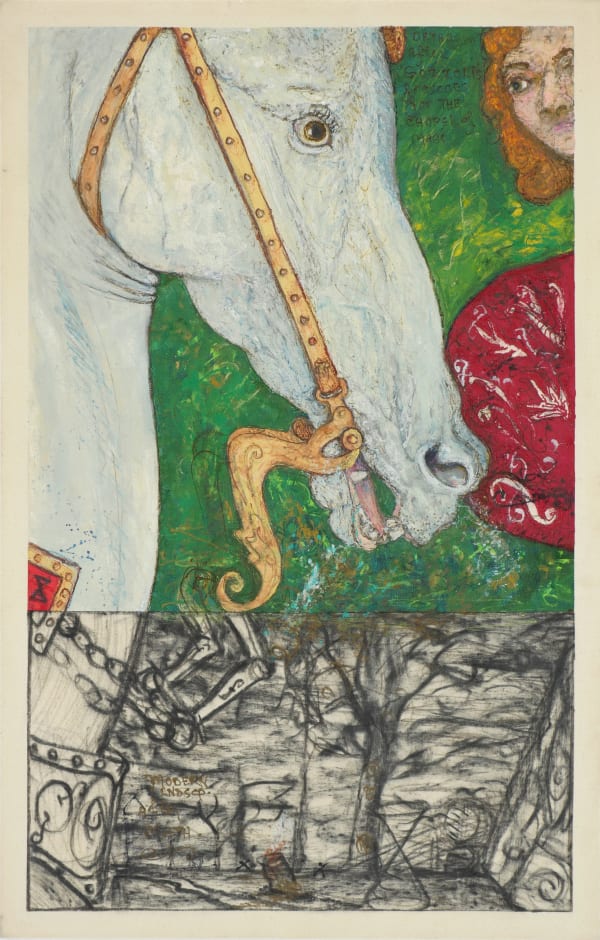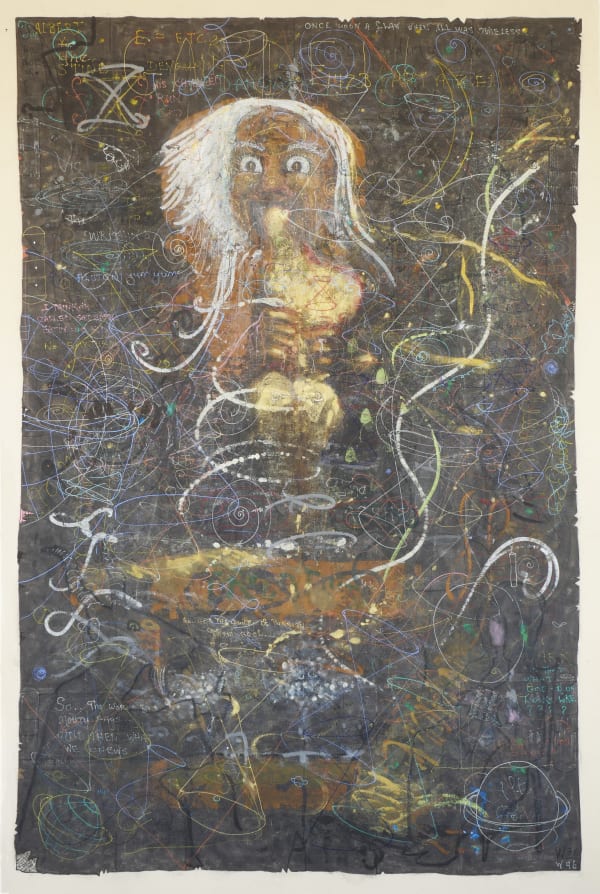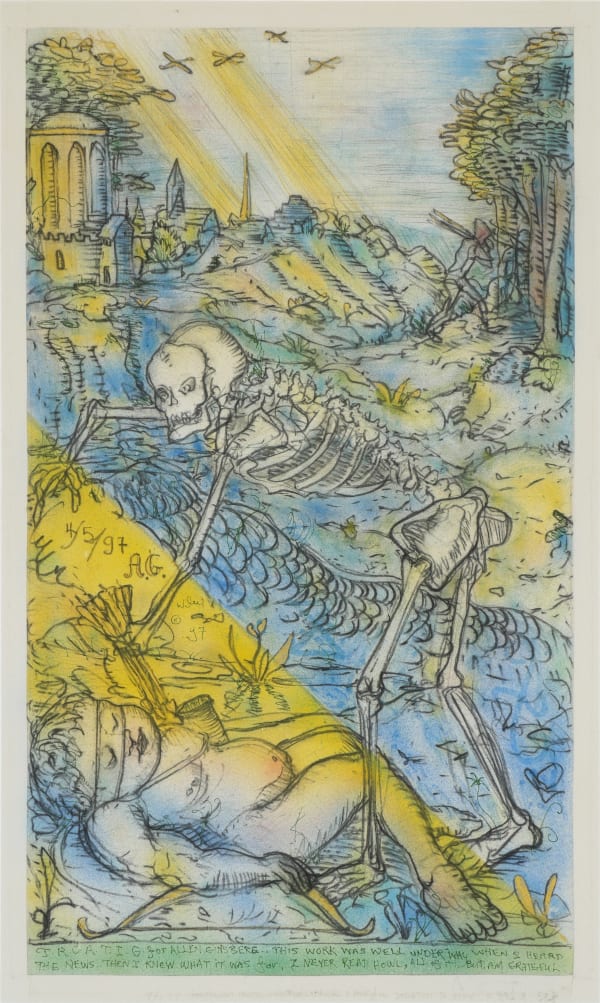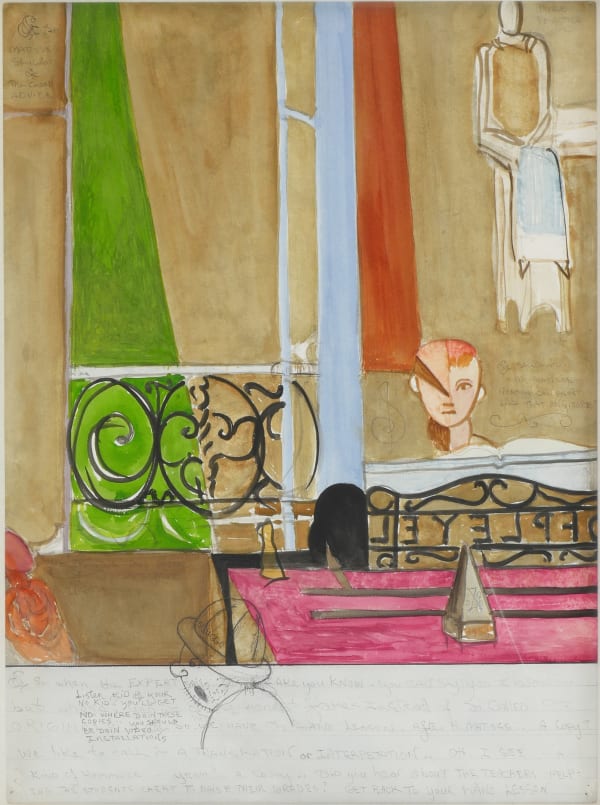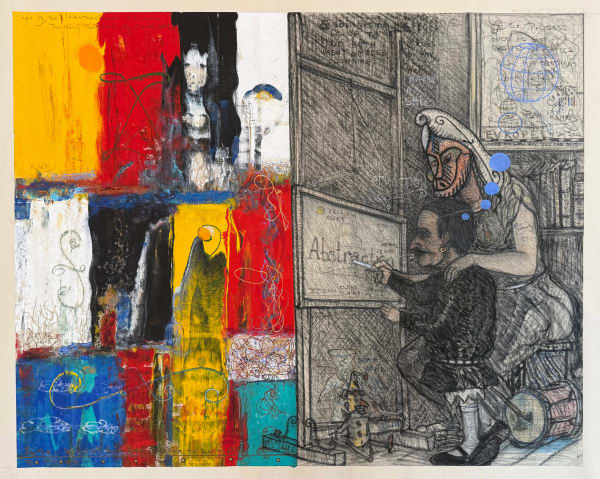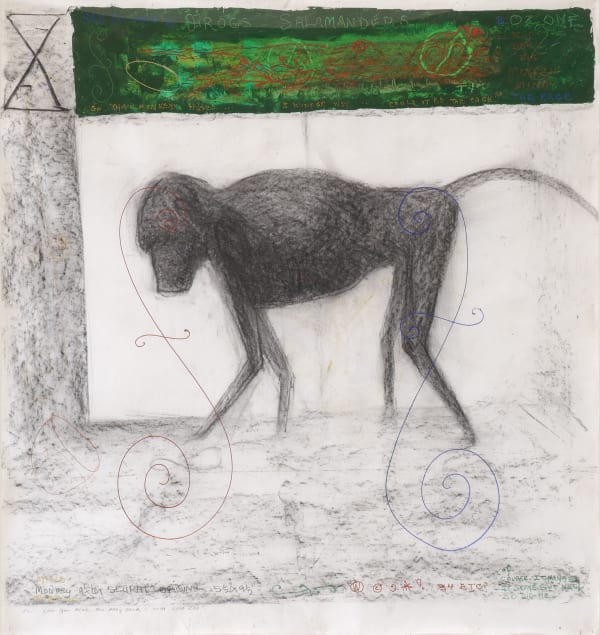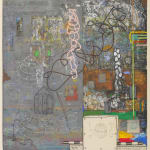William T. Wiley: Musin’ & Mussin’ with the Masters
Though his signature style was wholly original and always entirely recognizable, Wiley audaciously and gleefully "stole" from both his predecessors and his peers. Sometimes he was reverent; sometimes he was cheeky. Always, he was empathetic, in his open-ended investigations of the moral responsibility of the global citizen.
Though 30 years old, the works selected for this exhibition grapple with many of the same topics that are in our current headlines — environmental degradation, inequality, the horrors of war, and governments that fail their people.
William T. Wiley was born in 1937 and moved to San Francisco in 1956 to attend the San Francisco Art Institute (then the California School of Fine Arts). He completed his MFA in 1962, then taught at UC Davis, where he, along with Wayne Thiebaud, Robert Arneson, Roy De Forest, and Manuel Neri, transformed what was known as an agricultural college into one of the most important art schools of the 1960s and 1970s. In 2009 the Smithsonian American Art Museum mounted a retrospective of Wiley's work that traveled to the Berkeley Art Museum in 2010. In 2013 Wiley was the subject of a major solo exhibition at the Fondazione Marconi in Milan. During the 2013 Venice Biennale, Wiley's work was included in the Prada Foundation's remake of the legendary exhibition, When Attitude Becomes Form, originally curated by Harald Szeemann at the Bern Kunsthalle, Switzerland in 1969. Wiley's paintings, works on paper, sculptures and films are in the permanent collections of nearly every museum in the United States as well as dozens of institutions internationally.
Opening Reception: Thursday, May 22, 5–7 PM
Exhibition Talks:
Rachel Teagle
Director, Jan Shrem and Maria Manetti Shrem Museum of Art
Thursday, May 29, 5–7 PM




